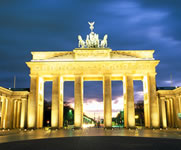Other highlights
Contact
Rüdesheim Tourist Center
Rüdesheim Tourist Center
65385 Rüdesheim
Email:
[email protected]
Internet:
www.ruedesheim.de
Rüdesheim Tourist Center
65385 Rüdesheim
Email:
[email protected]
Internet:
www.ruedesheim.de
Museums

Covering an exhibition area of 1,000m² in historical vaulted cellars, the Medieval Torture Museum in Rüdesheim provides an informative and instructive insight into the history of the legal system in the Middle Ages. The museum has an extensive collection of some of the most formidable medieval instruments of torture. Visitors can learn all about torture, witches, the stake, witch-hunts, the burning of witches, the obsessive belief in witchcraft, the Inquisition and much more besides. It illustrates the period of witch-hunting from the 14th to the 16th century and the investigations carried out by the heads of church. The exhibits cover three floors and are explained in detail. The background music and dimmed lighting help to create a suitably sombre atmosphere. Open daily from April to November and on Saturdays and Sundays only from December to March.
» www.foltermuseum.com
Visitors entering the ancient Brömserburg Castle, an impressive sight in itself, are taken on a journey through 1,000 years of fascinating wine history. Old wooden and iron screw wine presses, a historical tree press dating back to 1594, and wine barrels, barrel carts and wine pumps are all displayed in the castle gardens, and approximately 2,000 wine-related exhibits from antiquity to the present day are on show in the halls and vaults inside. Historical tools indicate how much harder the work of wine-growers, cellar masters and barrel coopers used to be compared to today. Particular highlights of the collection include exquisite glasses representing all of the important stylistic periods in Europe. Open from mid-March to the end of October. Guided tours for groups only - available on request.
» www.rheingauer-weinmuseum.de
Siegfried's Mechanical Music Cabinet, close to the Drosselgasse in Rüdesheim, is the first German museum of automated musical instruments. Covering an exhibition space of more than 400m², the museum has one of the largest and most beautiful collections, stretching from the 18th to the 20th century with approx. 350 self-playing instruments – from a delicate musical box to a gigantic piano-orchestrion. It also includes tools and machines for manufacturing barrel organs, cardboard music, piano rolls and musical box plates. Providing an insight into music, traditional techniques as well as the joy of still being able to understand how these instruments work, the museum captivates visitors of all ages. Open from March to December, disabled facilities, multilingual guided tours.
» www.siegfrieds-musikkabinett.de
High up on the ridge of the Niederwald in the Rhenish-Westphalian Slate Mountains the impressive ten-metre-high statue of the mythical figure of “Germania” is visible from miles around. The 38-metre-high monument and its grand statue were built to commemorate the formation of the new German Empire in 1871, and the foundation stone was laid in 1877 in the presence of Kaiser Wilhelm I. The national monument commemorates the re-establishment of the German empire with the figure holding the imperial crown in her proudly raised right hand and the imperial sword in her left hand. It was seen as one of the greatest works of art of its time. Kaiser Wilhelm I and all of the princes attended the ceremony for the inauguration of the monument in 1883. Dates and coats of arms on the base refer back to the time when the German Empire was founded. Today, visitors can take the cable car through the vineyards to “Germania”.
» www.ruedesheim.de/tourist/index_germania.html
Travel Planner
Select an option...



